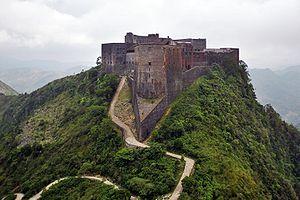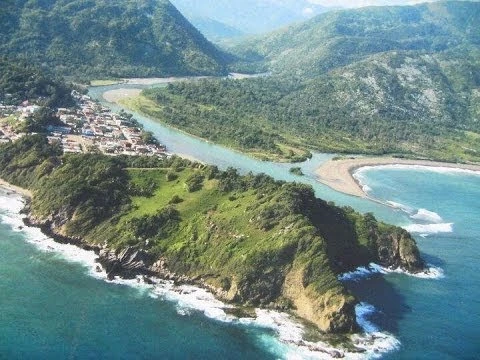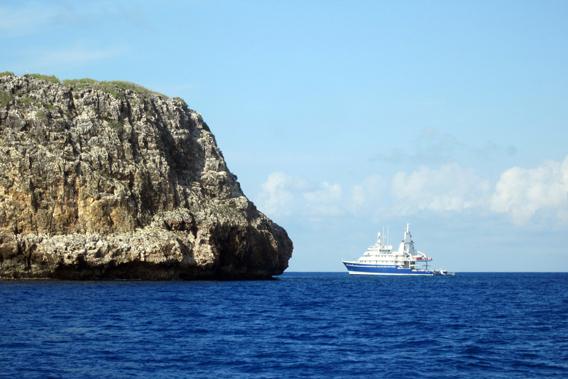Port-au-Prince: A Haitian Treasure to Discover
Port-au-Prince, a city with a rich history, has been the capital of Haiti since 1749. Nestled in the heart of the Caribbean island nation, this vibrant and historic metropolis attracts visitors with its architectural treasures, iconic sites, and unique cultural heritage. Discover the must-sees of Port-au-Prince and immerse yourself in its captivating history.
The Notre Dame Cathedral: A Neoromanesque Splendor
The majestic Notre Dame Cathedral, open for worship on December 20, 1914, is located in the heart of Port-au-Prince, on D’Aubry Street. It represents the largest religious construction in the city and probably in all of Haiti. With its two imposing white towers reminiscent of the Basilica of the Sacred Heart in Paris, it stands out in the urban landscape.
Formerly, to the left of the main entrance of the current cathedral, there was a wooden church, a vestige of the colonial period, built in 1720. Unfortunately, this church was destroyed by a fire during the popular riots of 1991. Fortunately, the Notre Dame Cathedral continues to shine, welcoming the faithful and the curious with an aura of grace and spirituality.
The Episcopal Church of the Holy Trinity: An Artistic Treasure
Although the Episcopal Church of the Holy Trinity is architecturally unremarkable, it holds significant cultural importance due to its naive paintings adorning the apses and side aisles. These biblical representations are transposed into Haitian landscapes, creating a unique link between religious art and local culture. The paintings, created by renowned Haitian artists such as Bazile, Bottex, Préffète Duffaut, Obin, and Bigaud, date back to 1950.
Champ de Mars: A Tribute to Independence Heroes
To commemorate the 150th anniversary of Haiti’s independence in 1954, Champ de Mars Square was adorned with statues dedicated to the four heroes of independence: Jean-Jacques Dessalines, Henri Christophe, Toussaint Louverture, and Alexandre Pétion. The park offers a majestic perspective with beautifully restored water basins. The equestrian statues of Dessalines and Henri Christophe, the works of sculptors Richmond Barthe and Ramos Blanco, dominate the square and testify to the greatness of Haitian history.
The National Palace: A Resurrected Pride
The National Palace, built in 1881 under President Salomon, was destroyed by an explosion in 1912. However, thanks to the talent of Haitian architect Georges Baussan, the palace was splendidly rebuilt by 1871. Today, it proudly stands in the heart of Port-au-Prince, bearing witness to the Haitian people’s resilience in the face of historical challenges.
The Museum of the Haitian National Pantheon (MUPANAH): A Journey Through History
MUPANAH houses a fascinating collection that traces Haiti’s history, highlighting Taíno, Spanish, and colonial remnants. One section is dedicated to independence heroes, exhibiting unique artifacts such as the silver pistol with which Henri Christophe took his own life and the bell that announced independence. Among the curiosities, you’ll also find the anchor of the Santa Maria, Christopher Columbus’s caravel, which ran aground on the northern coast of Haiti in 1492.
Other sites and museums are also worth a visit, such as the Bureau National d’Ethonologie, which preserves traditional religious images, and the Haitian Art Museum of Collège Saint-Pierre, showcasing original works and copies of renowned artists.
The Sylvio Cator Stadium: A Place of Passion
Sports enthusiasts shouldn’t miss the Sylvio Cator Stadium, one of Haiti’s most beautiful stadiums. In addition to hosting matches, the stadium has also been a venue for concerts and popular shows that have marked the country’s cultural history.
In summary, Port-au-Prince is a destination rich in history and culture, where every street corner reveals a hidden treasure. Let yourself be captivated by the enchanting atmosphere of this Haitian city and delve into its exceptional heritage.












